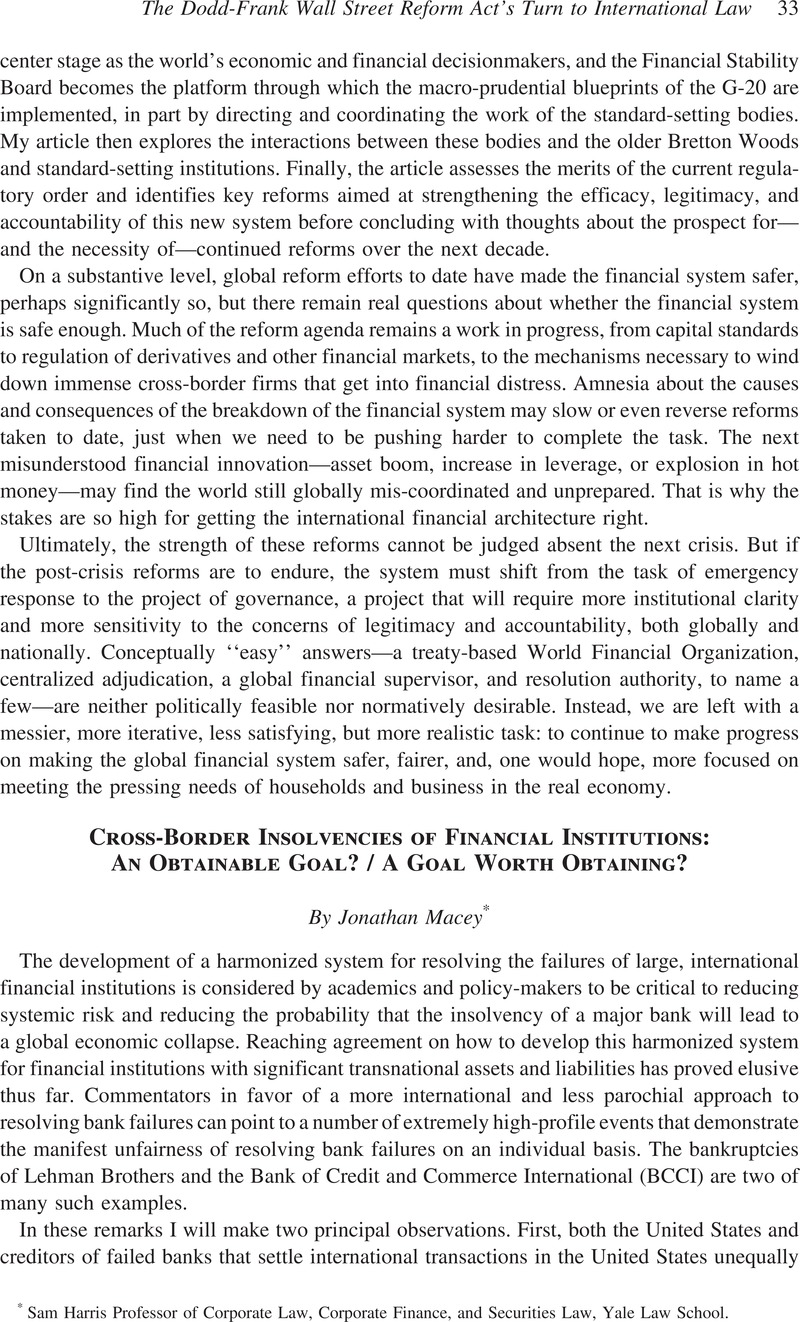No CrossRef data available.
Published online by Cambridge University Press: 20 January 2017

1 Ring-fencing describes the practice of cordoning off and freezing the assets and liabilities of a failed company in a particular jurisdiction, and then treating those assets and liabilities separately from the company’s assets and liabilities in other jurisdictions.
2 Cumming, Christine & Eisenbeis, Robert, Resolving Troubled Systemically Important Cross-Border Financial Institutions: Is a New Corporate Organizational Form Required?, Federal Reserve Bank of New York, Staff Report No. 457, at 12 (July 2010)Google Scholar, www.newyorkfed.org/research/staff_reports/sr457.pdf.
3 Macey, Morris, Preferences and Fraudulent Transfers Under the Bankruptcy Reform Act of 1978, 28 Emory L.J. 685, 685 (1979)Google Scholar. Another goal of bankruptcy law, at least under the reorganization provisions in Chapter 11 of the U.S. Bankruptcy Code is to give debtors a “fresh start” in business after reorganizing their businesses and resetting the terms of their obligations to creditors. U.S. bankruptcy law has been criticized as being too lenient on companies. Other countries have been similarly censured, particularly France, whose insolvency process is generally considered to tilt too much towards companies and jobs, and to afford too little influence to the creditors of failed companies. In Britain, insolvency usually results in liquidation. Despite these differences, all countries share the public policy goal of efficiently resolving the debtor’s estate. European Bankruptcy Laws: Out of Pocket, Economist (Dec. 30, 2008), http://www.economist.com/node/12855376; White, Michelle, The Costs of Corporate Bankruptcy: A U.S.-European Comparison, in Bhandari, Jagdeep & Weiss, Lawrence, Corporate Bankruptcy 467 (1996)CrossRefGoogle Scholar.
4 Id.